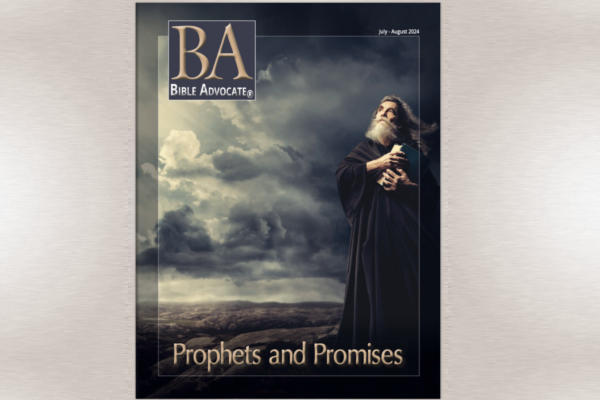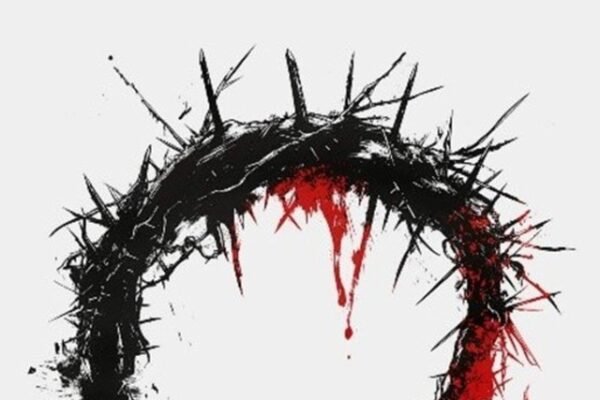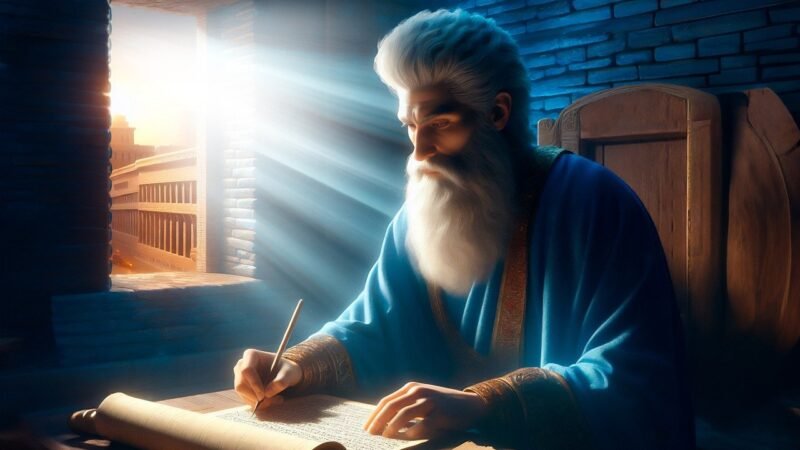The Michigan State Conference of the Church of Christ, predecessor to the Church of God (Seventh Day), made plans for the publication of a magazine in its conference at Bangor in June 1863. It chose The Hope of Israel as the name, solicited subscriptions at seventy-five cents per year, received offerings to defray startup costs, and hired H. S. Dille as its editor.
On August 10, 1863, the first edition of The Hope was sent to fewer than forty subscribers. By late 1864, Dille reported its readership had grown to subscribers in eighteen states. He believed The Hope’s circulation had grown rapidly because it was the only Sabbatarian paper to publish its readers’ religious opinions.
The Hope’s open editorial policy was decreed by the Church. It stated its opposition “to all sectarian and party spirit” and invited “honest enquirers after truth to exchange views, through the columns of the ‘Hope:’ not for debate, but as a means of investigating subjects, in the light of God’s Word.”1
Unique readership
At the time the Church introduced The Hope, Sabbatarians had a choice of two publications: James White’s Review and Herald that served his Seventh-day Adventist Church, and the Seventh Day Baptist Church’s Sabbath Recorder. Neither of these magazines served the membership of the Church of God or its sympathizers.
As pointed out later by Jacob Brinkerhoff, the Baptist paper advocated immortality of the soul and deferred teaching the imminent return of Christ. The Review and Herald taught the Sabbath, the Advent, and conditional immortality, but it also endorsed the inspiration of Ellen White’s visions and the heterodox doctrines derived from them.
The Hope taught the Advent, Sabbath, and conditional immortality, while advocating sola scriptura. Its open forum and unique doctrines had great appeal to many Sabbatarians who had withdrawn from the Whites’ movement or had been ostracized from it for repudiating Ellen White’s visions.
In the summer of 1857 Gilbert Cranmer was banned by James White from preaching in White’s churches because he expressed disbelief in their shut door doctrine, based largely on Ellen White’s first vision.
When half the Marion, Iowa church refused to accept Ellen White’s writings as “equal authority, and binding forever with the Bible” in 1861, their fellow members “repelled us from them, denouncing us as rebels . . . distinctly intimating that they no longer desired nor would tolerate our company in their religious meetings, otherwise than as spectators.”2
One of the many letters published in The Hope substantiates Dille’s rationale for the magazine’s popularity:
I like the aspects of your little paper, thus far . . . Look at the ”Review & Herald,” published by James White, in which he advocates the Mesmeric visions of his wife; and requires us to receive them as inspiration; and if we refuse to do so, we are denounced and anathematized.3
Many scattered readers of The Hope never became members of the Church of God. But the magazine encouraged them to remain faithful to God in spite of their disappointment with their Adventist brethren. The magazine helped them realize that their experiences with the Adventist Church were not unique, and gave them a sense of belonging to a community of believers who were unencumbered with visions and extra-biblical doctrines.
Unifying the Church
The first issue of The Hope listed the Church’s theology in ten statements, summarized here:
1. The Bible is the sole authority for Christian faith and practice.
2. Christians are to observe the Ten Commandments.
3. Sin entered the world through disobedience, resulting in death. Sinners will be annihilated in the Judgment.
4. Man does not possess an immortal soul but may obtain eternal life through faith in Christ by resurrection.
5. Israel will be restored.
6. God will establish His kingdom on earth. Jesus will reign for one thousand years from David’s throne. Abraham, Isaac, Jacob, and their faithful posterity will inhabit it with all God’s saints.
7. God the Father will dwell with the redeemed through eternal ages on the new earth.
8. There will be no death, suffering, or sorrow in God’s eternal kingdom.4
These teachings of the Michigan church were universally accepted by its sister churches in Iowa, Kansas, Missouri, and Nebraska — each organized independently. The magazine unified these churches in doctrine and mission so completely that they organized the General Conference of the Church of God on October 5, 1884, without preconditions or negotiations.
Open forum
While the Church was united in its initial teachings, some readers of the magazine believed its tenets of belief were incomplete. Taking advantage of The Hope’s open forum, they submitted their doctrinal studies for consideration and possible adoption by the Church.
The first of these was published on the subject of the duration of Jesus’ entombment. Luther L. Tiffany urged a literal interpretation of Jesus’ prophecy that He would be three days and three nights in the “heart of the earth.” He argued that while a Friday crucifixion and Sunday morning resurrection fell short of the period foretold by Jesus, a Wednesday crucifixion (with late afternoon burial) and a late Sabbath afternoon resurrection perfectly fulfilled His prediction.5
Tiffany’s argument resulted in the gradual development of a consensus in the Church. Jesus’ seventy-two-hour entombment and Sabbath afternoon resurrection is a doctrine it continues to teach.
An article on the time and frequency of the Church’s communion service was submitted to The Hope by Samuel Davison in 1872. He observed that Jesus instituted the Lord’s Supper as a memorial to His impending death on the beginning of the preparation day for the Hebrew Passover and died on the cross later that afternoon. He advocated the Church should follow Jesus’ example and hold its memorial service annually at the time Jesus instituted it.
When Davison’s article was published, the Church was holding communion services randomly throughout the year. The Michigan church practiced ending its quarterly conferences on Sunday afternoon with a Lord’s Supper service accompanied by foot washing.
Davison’s polemic met with such favor that Editor Jacob Brinkerhoff began publishing an arbitrary date for the Church’s annual communion service in the Advent and Sabbath Advocate, successor to The Hope. His suggested date prompted the Church to begin to observe its Lord’s Supper services in unison annually. When he later learned of the perpetual Hebrew calendar, he published the date of the Passover as the time for the Church’s communion service, a practice we continue from year to year.
Unfortunately, the Church’s Christology was not settled by the many discussions published in the Church’s papers. The opinions most frequently argued in the 1870s and 80s were the heresy of Jesus’ natural birth and adoption as God’s Son, versus His deity as God the Son. Andrew N. Dugger, president of the General Conference, appears to have settled the Church’s Christology in 1924 by publishing an article in the Bible Advocate favoring Arianism.
By the 1980s the Church’s Christology was again under investigation. The International Ministerial Congress of 1994 adopted the doctrine of the deity of Jesus, and this was confirmed in 1996 by the North American Ministerial Council. In 2006 the council adopted its Statement of Faith and said Jesus “shares the nature, names, and attributes of God with His Father.”6
The Bible Advocate’s open forum was closed permanently in 1914 when Andrew N. Dugger became its editor. He insisted that the publication of diverse ideas contributed to a lack of doctrinal uniformity in the Church.
Missionary work
The Bible Advocate has served as one of the Church’s most effective missionaries, establishing indigenous churches in numerous countries around the world. In spite of the many cultures they embrace, the Advocate has united them in the Church’s theology. When these nations gathered in 1978 to organize the International Ministerial Congress, they adopted a Statement of Faith reflecting the Church’s theology without study or exceptions.
The Bible Advocate was the means of introducing the Church of God to India in about 1930. For years the late V. J. Joseph and his son V. J. Utham Rao, migrants from Burma, led a membership confined mostly to southeast India. However, in later years its membership has grown into central India and, under the leadership of George Hnamte, into the northeastern state of Mizoram. Utham Rao’s son, Jacob, now serves the Church as the International Ministerial Congress’ representative for India and much of Asia.
The churches in Trinidad, Tobago, and Jamaica were founded in the 1930s by James A. Murray, after he received a Bible Advocate magazine. The Jamaican church became the larger of the two and has planted numerous congregations among its Caribbean brethren in Canada, the United States, and the United Kingdom.
Upon receiving a copy of the Bible Advocate in the 1930s, Benjamin I. Tikili began the Church of God in Rivers State, Nigeria. He built and dedicated its first chapel in 1939, and community schools in the Ayaba and the Ahoada districts in the1950s. The Church’s membership expanded from southeast Nigeria to the country’s many populous areas, with membership now estimated around one hundred thousand.
The Church of God of Kenya was founded by George B. Nyatangi, who received a copy of the Bible Advocate in the early 1970s. The Church’s membership was confined to portions of the western highlands in the Kericho, Kisii, Narok, and South Nyanza districts, but it has evangelized and established congregations in urban centers like Nairobi and Nakuru. Through the efforts of John Njogu (Kenya) and missionary Robert Crawford (England), the Kenyan church has planted the Church of God in Tanzania, Uganda, Sudan, Burundi, D. R. Congo, Rwanda, and Zambia.
Global impact
When the fledging Church of Christ issued its first Hope of Israel magazine on August 10, 1863, it had no idea it was launching a magazine that would take its simple gospel message to so many people around the world. Only God could have foreseen the global impact the Church’s humble endeavor would ultimately make over its one hundred fifty years of continuous publication.
______________________
CoG7 minister since 1955, Elder Robert Coulter wrote The Journey: A History of the Church of God (Seventh Day). He was interim BA editor for a few months in 1981.
Notes
1. “The Late Conference,” The Hope of Israel, October 28, 1863, 2.
2. Circular Letter, signed by V. M. Grey, E. P. Goff, and M. N. Kramer, The Hope of Israel, September 7, 1864, 1.
3. R. G. Whitcomb, The Hope of Israel, April 23, 1864, May 16, 1864, 3.
4. Enos Easton, Introductory, The Hope of Israel, August 10, 1863, 2.
5. “Christ’s Resurrection on the 7Th Day,” The Hope of Israel, September 21, 1864, 2, 3.
6. Statement of Faith, Bible Advocate Press, 6.




